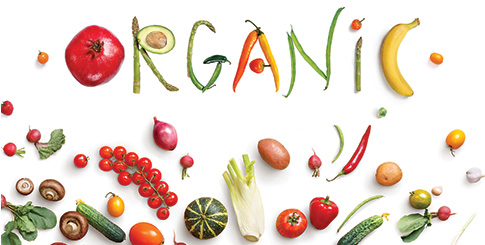Like conventional growers, there is still little control over what and how much will be available at harvest time. Czajkowski buys citrus from a variety of small growers and managing volume can be difficult.
“One field may have nice fruit all the same size, while another one may have gigantic fruit,” she describes. One solution is maintaining relationships with multiple growers; another is staying in touch, often, with buyers. “We communicate with our customers, like ‘I can give you this, but I can also give you this’—[but] organics can take a little more management on the supply chain side.”
Organic Numbers: Top Crops, Exports & Imports
According to the most recent Certified Organic Survey conducted by the USDA’s National Agricultural Statistics Service, organic crops—fruit, vegetables, and field crops—were responsible for 56 percent of overall organic food sales. Among crops, produce accounted for 40 percent of sales.Among the survey’s bestselling items were apples, lettuce, and strawberries in 2016. Last year, in 2017, according to the Organic Produce Network, organic berries, including strawberries, blueberries, and blackberries, took the top spot with sales of $565 million. Bananas and apples followed closely behind.
In addition to growing organic for domestic consumption, the United States exports and imports organic product, mostly produce. In 2016, tracked exports were valued at nearly $550 million with apples, grapes, and lettuce accounting for top sales. Organic shipments went to 79 countries, with Mexico and Canada claiming the lion’s share or 70 percent of product (though this may change in the coming months due to tariffs).
Organic imports were valued at $1.65 billion in 2016, more than double the value of domestic exports. Not surprisingly, the top organic import was and still is bananas. Apples and blueberries round out the top three import items, followed by corn and soybeans. More than 43 percent of organic imports to the United States came from Mexico, Peru, Ecuador, Italy, and Turkey.
According to the USDA’s Economic Research Service, more than 53 percent of fresh fruit consumed domestically comes from other countries, which now makes the United States a net importer of fresh fruit.
Venues and Vectors
With competition heating up, suppliers are exploring ways to sell or use more of their expensive-to-produce organics. Waste is problematic from a sustainability viewpoint as well as a return on investment stance. For some growers, this means segueing into processing or fresh-cut operations.
Henry DeBlouw, president of Mike Pirrone Produce, Inc. in Capac, MI near Detroit, says he sells product to companies for processing. Organics currently make up 10 percent of his overall production, but his goal is to reach 30 percent. The most popular organic items with his customers are kale and collard greens, most of which end up in bagged mixes of lettuce or greens and remain a top choice for value-added products among consumers.



